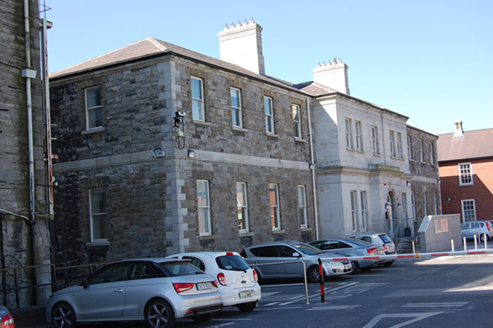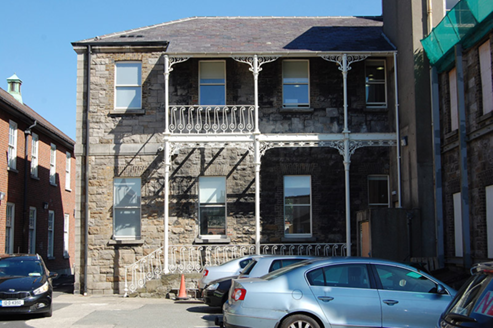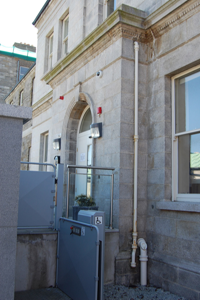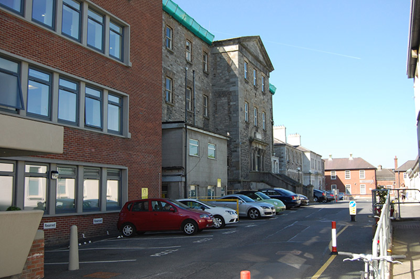Survey Data
Reg No
50110050
Rating
Regional
Categories of Special Interest
Architectural, Artistic, Social
Original Use
Hospital/infirmary
In Use As
Building misc
Date
1895 - 1900
Coordinates
315226, 233093
Date Recorded
11/05/2017
Date Updated
--/--/--
Description
Detached two-storey T-plan hospital, built 1896, having three-bay central breakfront to front (north) elevation flanked by four-bay wings, with full-height veranda to inner three bays of rear elevation, and having lower two-storey block to rear with three-bay south and five-bay east and west elevations. Hipped slate roof to main block, with two ashlar granite chimneystacks having carved cornices. U-plan slate roof to rear block, with slighter hipped roof to valley, and three brown brick chimneystacks; cast-iron rainwater goods. Brown brick chimneystacks to return with carved limestone cornices and some clay pots. Ashlar granite to breakfront, middle bay slightly recessed over slightly advanced porch, having carved dentillated granite cornice over ground floor. Rusticated snecked limestone walls to flanking bays, with cut granite eaves and plinth courses, ashlar granite quoins and carved granite platband between floors. Rusticated limestone walls with dressed limestone quoins to rear. Square-headed window openings with one-over-one pane timber sliding sash windows and granite sills; yellow, brown or red brick surrounds and voussoirs to wings and rear block. Round-headed main doorway has carved granite surround and keystone, and replacement door, approached by recent steps and wheelchair lift concealed behind wall. Rear veranda comprises cast-iron columns to two levels with decorative wrought-ironwork to spandrels and parapets and to valence to ground floor.
Appraisal
According to the Dictionary of Irish Architects, a new detached isolation wing at the Meath Hospital was opened in 1896. This is probably the building, designed by James Fuller and built by Meade & Son. The hospital has a handsome facade and displays good stone masonry in the texturally contrasting rock-faced limestone and ashlar granite. The south-facing balconies are a reminder of the popular outdoor treatments in vogue in the early twentieth century and display good-quality decorative metalwork. The building forms a visual and scale link between the taller, robust main building and the smaller later buildings.













